We care for your health with innovative and personalized treatments.

With over 20 years of experience, Spinel•li is one of the leading medical groups in Catalonia specializing in spinal care.
Since its founding in 2004 through the partnership of Dr. Aguilar and Dr. Krämer—and later in 2009 with the addition of Dr. Bagó to the project—the group has been dedicated to advancing the study of spinal physiology, diagnosis, and treatment. Special emphasis has been placed on adopting and mastering the most innovative surgical techniques, particularly minimally invasive procedures such as microsurgery and percutaneous surgery.
Today, Spinel•li has a multidisciplinary team of professionals committed to providing the highest level of care to its patients.
Outpatient Clinic

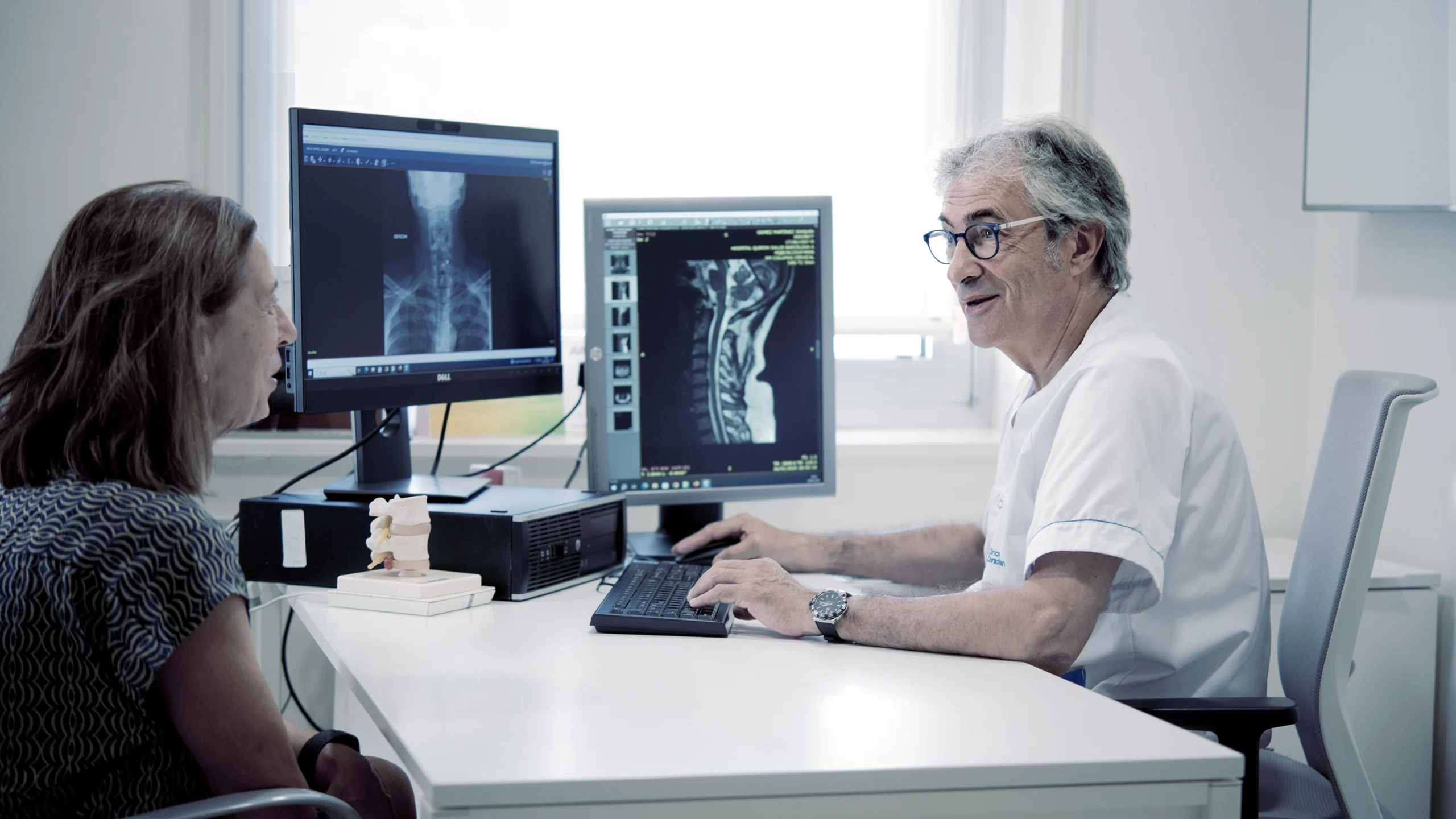
The outpatient clinic of the Spine Unit is the first point of contact between the patient and our team of specialists in the diagnosis and treatment of spinal disorders.
Our goal is to provide comprehensive, personalized, and multidisciplinary care, based on the latest scientific evidence and available techniques.
What happens during your outpatient visit?
What should you bring to your consultation?
- ID and health insurance or mutual provider card
- Referral letter (if applicable)
- Imaging tests (MRI, CT, X-rays)
- Previous medical reports and treatments received
- List of current medications
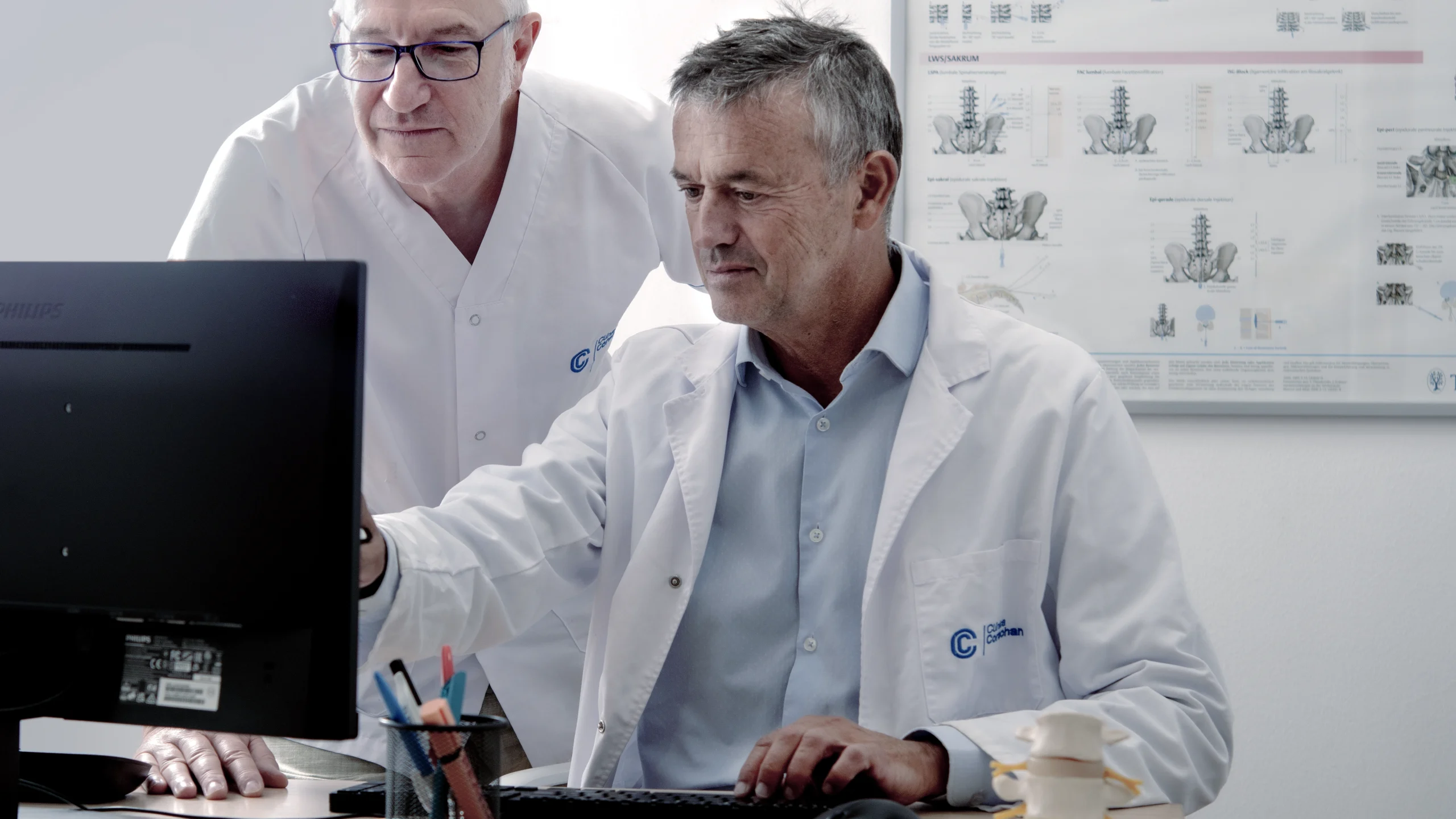
Patient-Centered Care
- At every visit, we are committed to:
- Listening to you actively
- Explaining your diagnosis clearly and understandably
- Making shared decisions about your treatment
- Addressing your concerns with honesty and professionalism
In our outpatient clinic, we specialize in the evaluation and treatment of a wide range of conditions affecting both the joints and the spine. Among our key services, we offer:
- Extensive experience in managing joint disorders and oncological pain
- Specialized care for complex conditions such as complex regional pain syndrome (reflex sympathetic dystrophy)
Surgery

Surgical Techniques in the Spine Unit
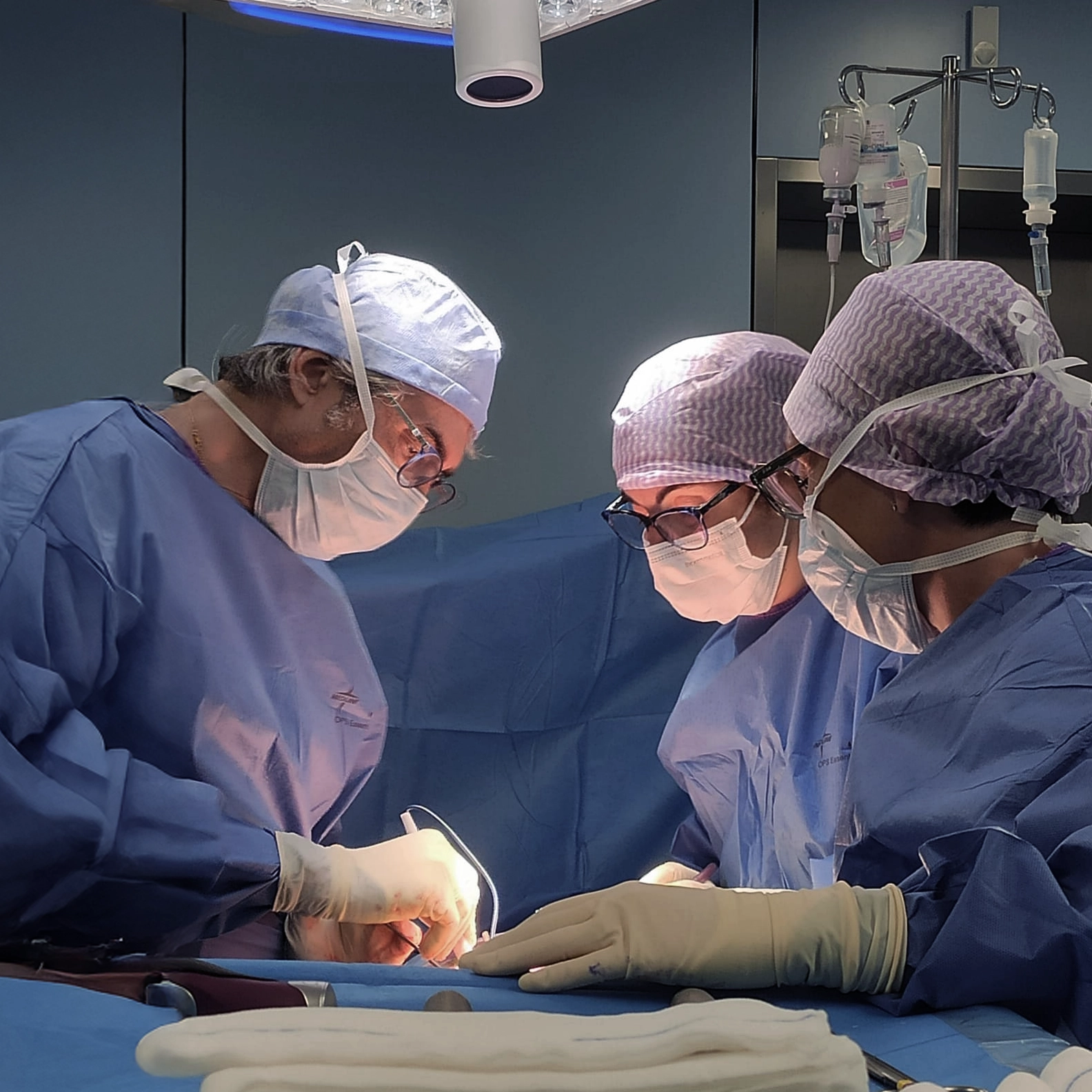
Spinal surgery is used to treat conditions that have not improved with conservative treatments such as physical therapy, medication, or injections.
We perform a range of procedures using different surgical approaches to provide the most appropriate solution for each diagnosis.
Below is an overview of the most common surgical techniques, to help you better understand each procedure.
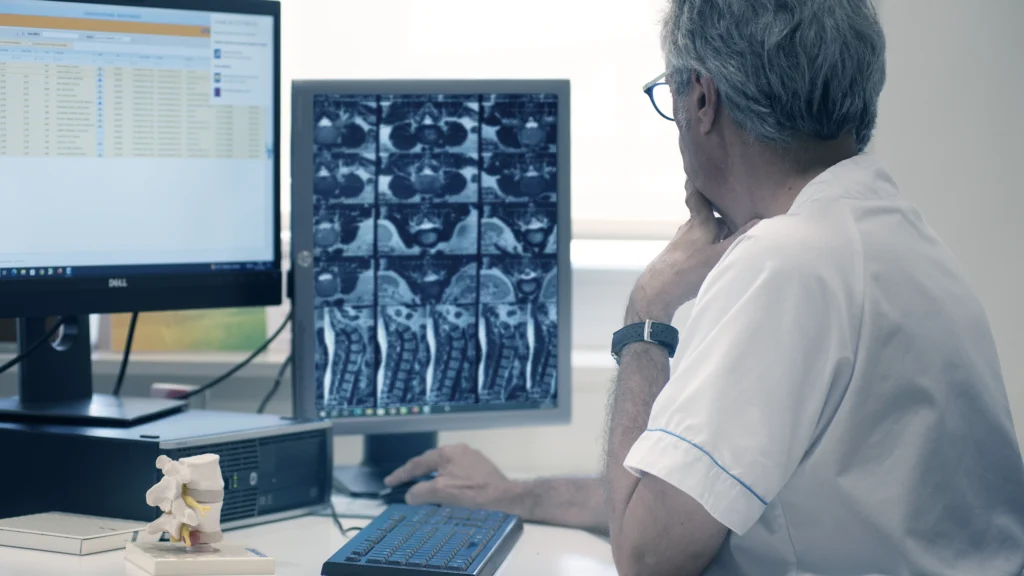
General Risks and Complications (common to all techniques)
- Infection, Bleeding, Thrombosis.
- Nerve injury (rare)
- Persistent pain or relapse
- Failed fusion (pseudarthrosis)
- Reoperation in some cases
Before Surgery
- You will receive a detailed explanation of the recommended procedure.
- You will be asked to sign an informed consent form, which includes risks and alternatives.
- You’re encouraged to ask any questions you may have.
Post-Discharge Follow-Up
Regular check-ups with imaging and clinical assessments.
In case of fever, wound redness, acute pain, or loss of strength or sensation, go to the hospital or contact your medical team immediately.
We also have extensive experience treating joint conditions and oncologic pain, as well as managing complex disorders such as complex regional pain syndrome (reflex sympathetic dystrophy).
Scoliosis and Spinal Deformity Surgery

Request a personalized assessment for scoliosis and spinal deformities by emailing: escoliosis@spineli.cat
Scoliosis and other spinal deformities (such as kyphosis or hyperlordosis) are changes in the normal alignment of the spine that can affect both children and adults. In some cases—when the curvature is severe, progressive, or causing significant symptoms—surgical treatment may be recommended.
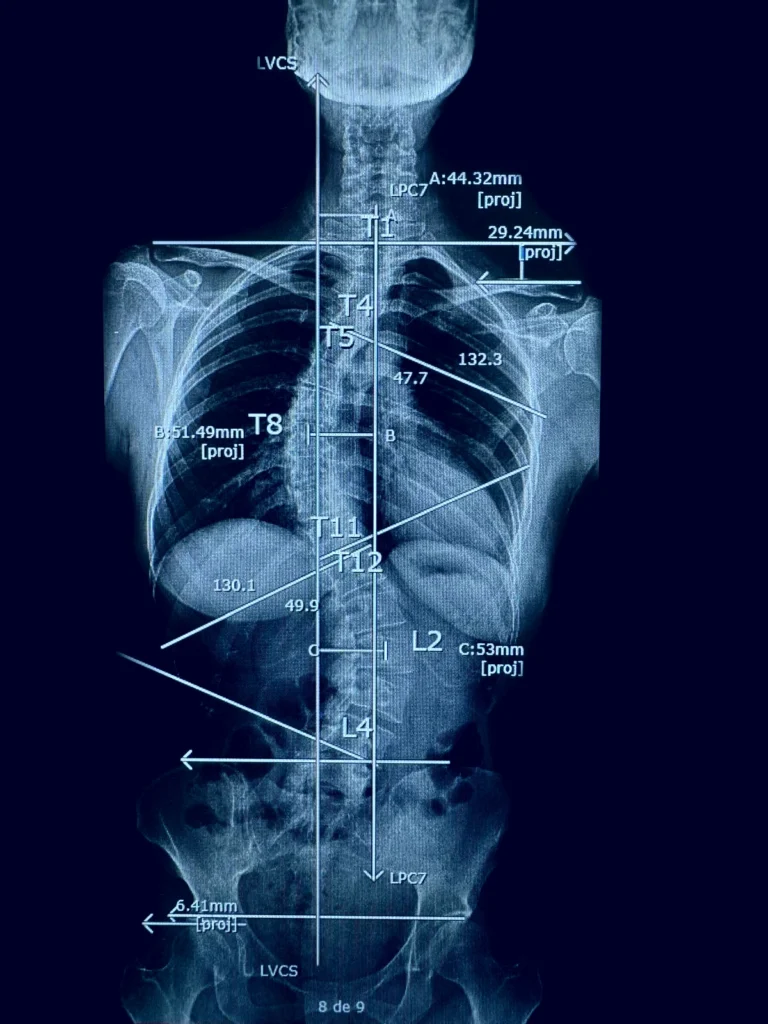
When Is Surgery Recommended?
- Adolescent idiopathic scoliosis with curves greater than 40–50°
- Degenerative scoliosis in adults causing severe pain, postural imbalance, or nerve compression
- Pathological kyphosis (e.g., Scheuermann’s disease) with pain, deformity, or progression
- Severe spondylolisthesis (slippage of one vertebra over another)
- Progressive neuromuscular or congenital deformities
- Failure of conservative treatment
What Does the Surgery Involve?
Instrumented Spinal Fusion (Arthrodesis)
The most common procedure: the affected spinal segments are stabilized using screws, rods, and other implants to realign the spine. Bone grafts are used to achieve permanent fusion between the vertebrae.
Osteotomies
In cases of rigid curves or severe kyphosis, parts of the vertebrae may be cut and reshaped to allow for proper correction.
Duration and Recovery
- Surgery length: 4 to 8 hours, depending on complexity
- Hospital stay: 5 to 10 days
- Relative rest for the first few weeks, followed by a progressive rehabilitation plan
- Full fusion typically achieved in 6 to 12 months
Risks and Complications
As with any major surgery, potential risks include:
- Wound infection
- Bleeding (sometimes requiring transfusion)
- Neurological injury (rare, but possible)
- Hardware failure or pseudarthrosis (failed fusion)
- Persistent pain or stiffness
- Respiratory or urinary complications
Intraoperative neurophysiological monitoring is used to minimize the risk of nerve damage during surgery.
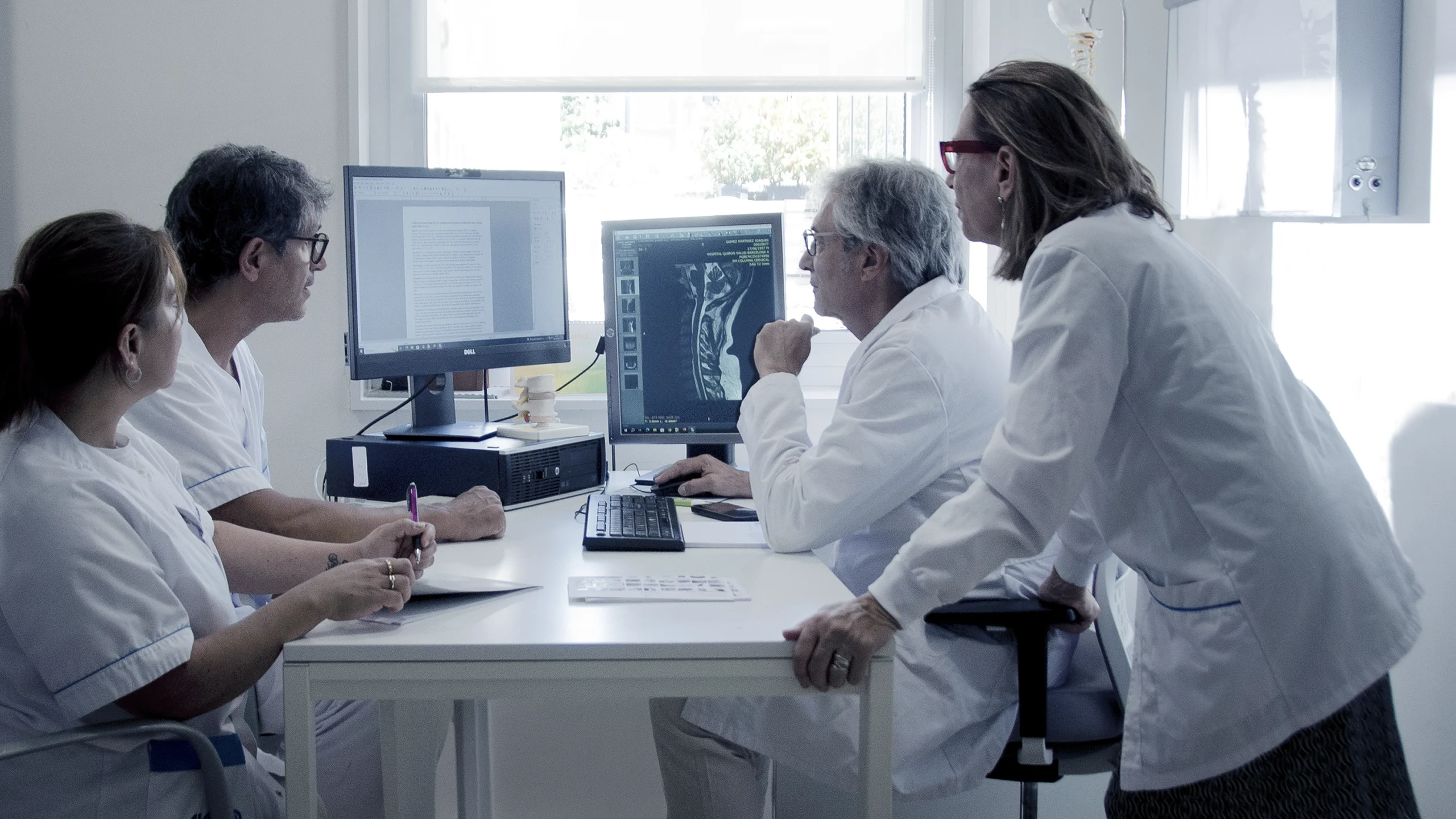
Preoperative Preparation
- Imaging studies: full spine X-rays, MRI, CT scan
- Pre-anesthesia assessment
- Pulmonary function tests if needed
- Detailed explanation of the procedure and informed consent
Expected Results
- Visible correction of the spinal deformity
- Pain relief and improved quality of life
- Long-term stabilization of the spinal curvature
Contact and Follow-Up
After discharge, periodic follow-ups will include X-rays and clinical evaluations. If you experience fever, wound redness, sudden pain, or loss of strength or sensation, please go to the hospital or contact your medical team.
Pain Management Unit

Advanced Treatments with a Focus on Minimizing Risk
The Pain Clinic specializes in treating individuals suffering from chronic pain that has not responded adequately to conventional therapies. Our goal is to relieve pain, improve function, and restore quality of life.
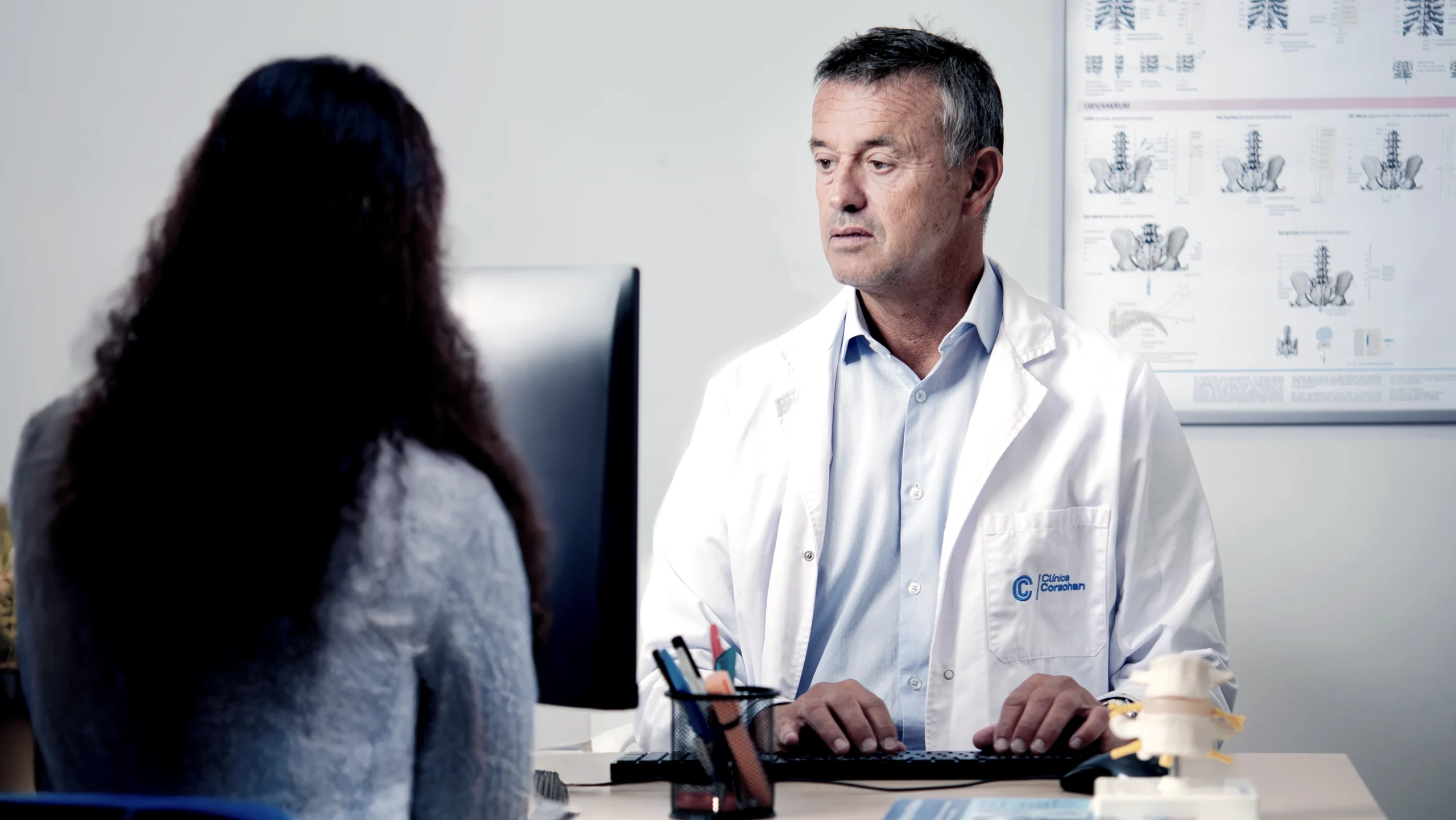
What Types of Pain Do We Treat?
- Chronic lumbar, cervical, or thoracic pain
- Persistent sciatica or lumbosciatica
- Post-surgical spine syndrome (“failed back surgery”)
- Neuropathic pain (e.g., postherpetic neuralgia, diabetic neuropathy)
- Cancer-related pain
- Chronic musculoskeletal pain
- Refractory headaches and migraines
- Persistent joint pain (knees, hips, shoulders)
- Complex Regional Pain Syndrome (CRPS)
Most Commonly Used Techniques in the Pain Clinic
Are the Procedures Painful?
Most techniques are performed on an outpatient basis, under local anesthesia or mild sedation.
They are generally safe, minimally painful, and allow for a quick return to daily activities.
Before Treatment
- A full clinical evaluation is carried out by the medical team.
- Imaging tests (MRI, CT scan, EMG) may be required.
- You will receive a detailed explanation and be asked to sign informed consent before any procedure.
Expected Benefits
- Pain reduction
- Improved sleep, mood, and mobility
- Decreased reliance on oral medications
- Enhanced quality of life
Follow-Up and Contact
After each procedure, clinical follow-up is carried out to assess the outcome.
If you experience fever, increased pain, bleeding, or neurological symptoms, please contact your physician or go to the hospital.
Osteoporosis


Osteoporosis is a systemic skeletal disease characterized by a progressive decrease in bone mineral density (BMD) and deterioration of bone microarchitecture, leading to increased bone fragility and a higher risk of fractures. It typically develops silently and without symptoms until a fracture occurs—most commonly in the hip, spine (compression fractures), or wrist.
While it primarily affects postmenopausal women and older adults, it can also be linked to factors such as endocrine disorders, long-term corticosteroid use, sedentary lifestyles, or chronic nutritional deficiencies.
At our Osteoporosis Unit, we provide a multidisciplinary approach to the comprehensive management of the disease, including:
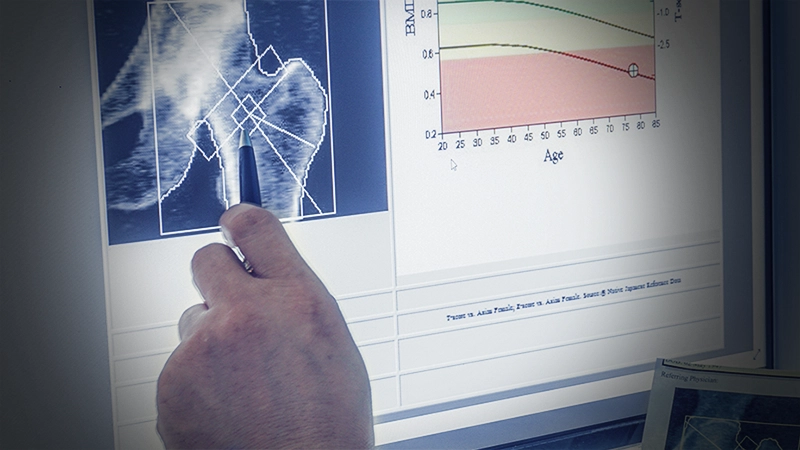
A timely diagnosis and treatment can help prevent serious health complications.
We also offer specialized psychological support to help patients regain emotional balance, especially those with prior fractures or reduced independence.
This comprehensive approach supports fuller functional recovery, improves quality of life, and reduces the risk of future complications.
Rehabilitation

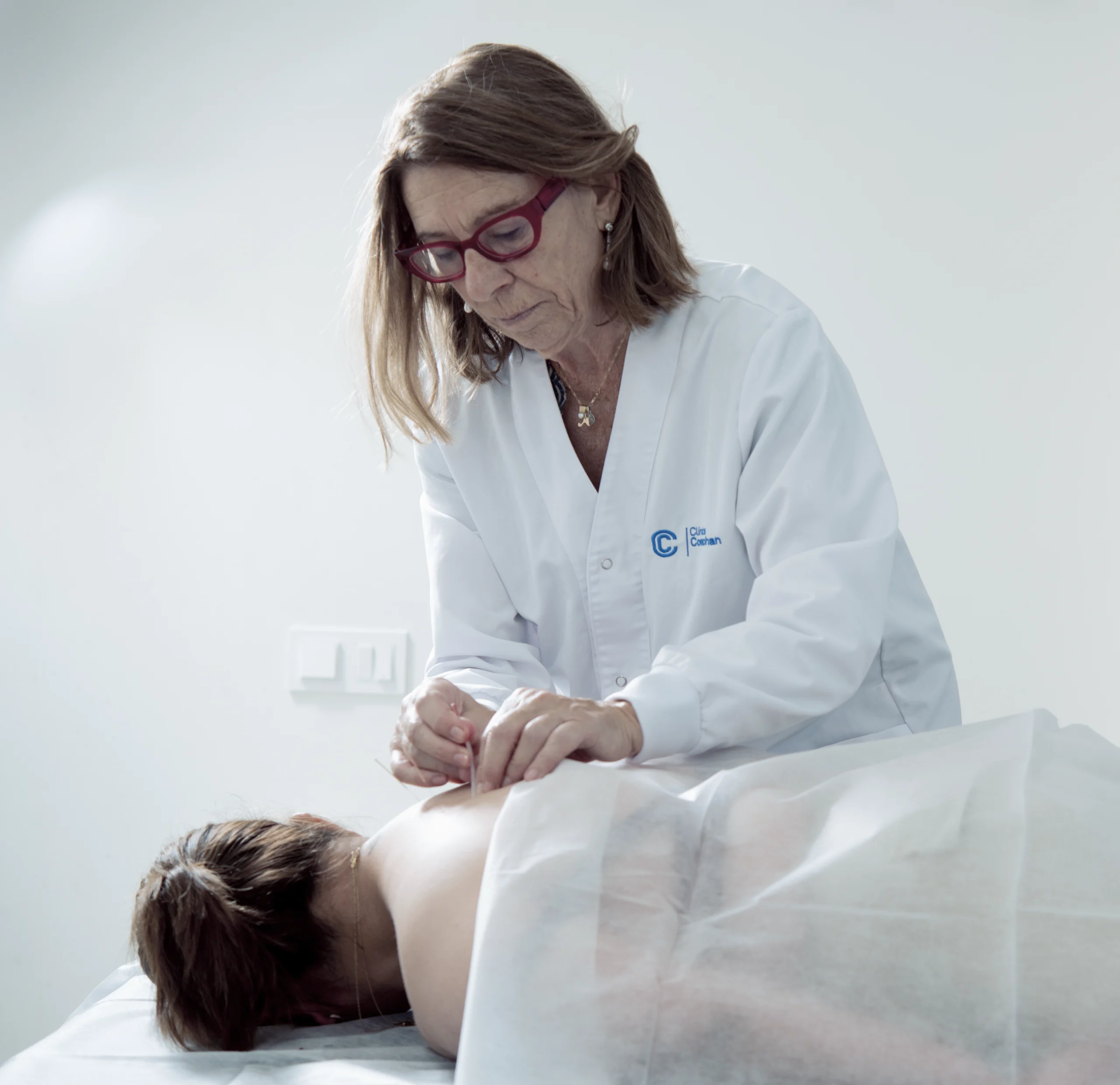
The Role of the Physical Medicine & Rehabilitation Physician in the Spine Unit
Within the Spine Unit, the rehabilitation physician plays a vital role in the comprehensive treatment of patients with spinal disorders—across both acute and chronic phases, and before or after surgical intervention.
All treatment is conducted under the supervision of a highly qualified multidisciplinary team that works in coordination to ensure holistic and personalized care.
What Does a Rehabilitation Physician Do?
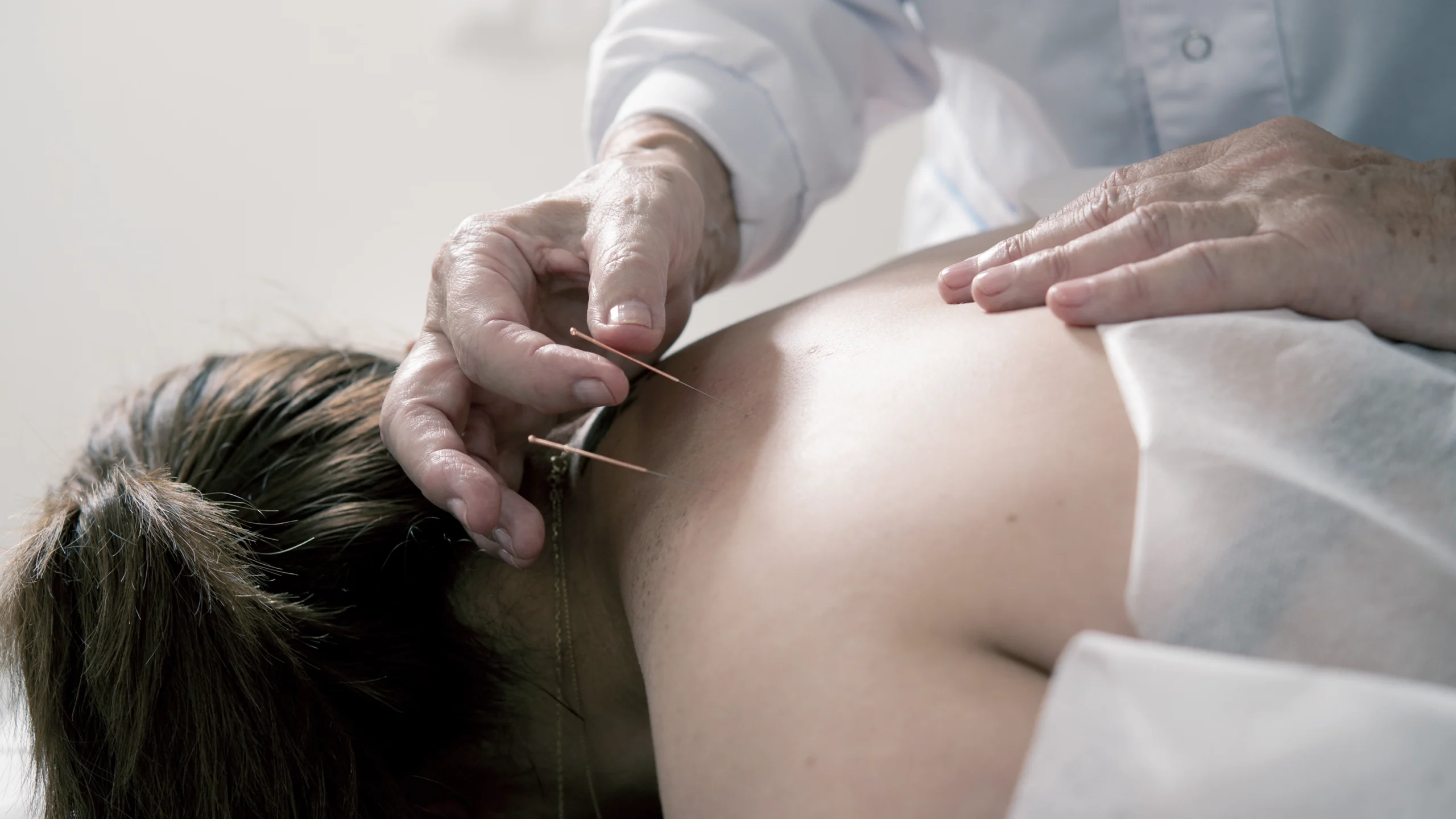
Together with the rest of the multidisciplinary team, the rehabilitation physician contributes to a faster, more effective, and longer-lasting recovery. Their functional approach complements the medical and surgical perspective, ultimately improving overall treatment outcomes.
Psychology

The Role of the Psychologist in the Spine Unit
The treatment of spinal disorders involves more than just physical or surgical interventions. Chronic pain, functional limitations, and the disruption of daily life can have a profound emotional impact. That’s why psychological support is a key component of the comprehensive care approach within the Spine Unit.
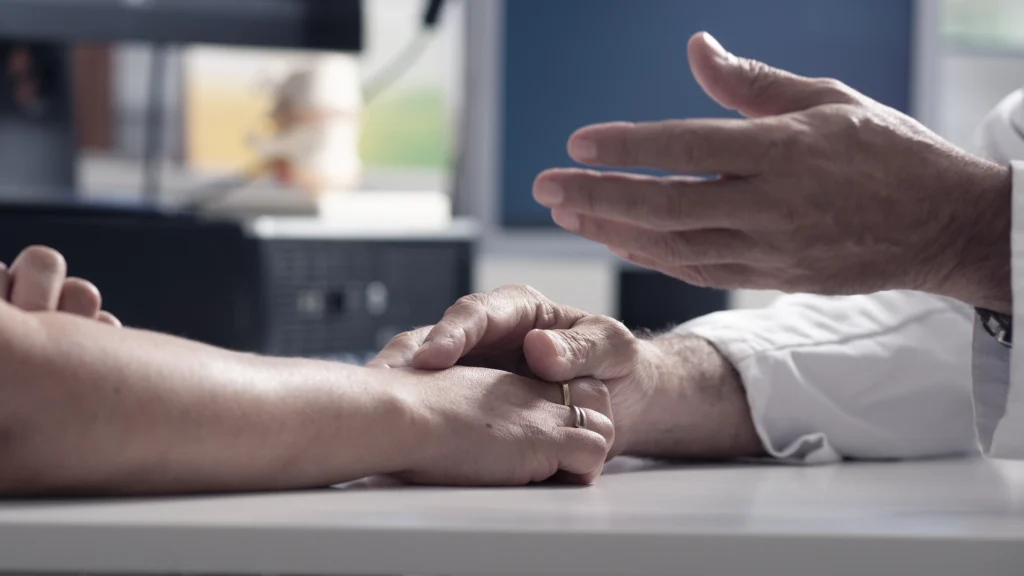
What Does the Psychologist Do in the Spine Unit?
A clinical psychologist specializing in pain and rehabilitation works closely with the medical team to:
- Assess the emotional impact of chronic pain (e.g., anxiety, depression, stress)
- Identify psychological factors that may influence pain perception and recovery
- Support patients through the process of accepting illness or disability
- Teach coping strategies, relaxation techniques, and pain management tools
- Enhance treatment adherence and motivation during rehabilitation
When Is Psychological Support Recommended?
- For patients with persistent pain that impacts quality of life
- In cases of anxiety, insomnia, or low mood
- When there is fear of movement or fear of relapse
- Before and after spinal surgery
- During functional or work reintegration processes
Benefits of Psychological Support
- Reduced emotional suffering related to pain
- Greater patient engagement in the recovery process
- Improved overall well-being and quality of life
Body and mind are deeply connected.
Psychological care helps restore the emotional balance needed for a more complete and lasting functional recovery.
Medical Specialties

Traumatology
A medical specialty focused on the diagnosis and treatment of injuries to the musculoskeletal system, both acute and chronic. At our center, trauma specialists prioritize conservative treatments and minimally invasive therapies, always aiming for functional recovery and patient quality of life. We also perform orthopedic spine surgery in selected cases where non-surgical treatment is not sufficient, using advanced and safe surgical techniques.
Pain Management Unit
A specialized service dedicated to the comprehensive diagnosis and treatment of chronic pain, regardless of its origin. We address both pain-causing conditions and their complications through interventional therapies, pharmacological treatments, and complementary techniques. In cases where pain is linked to structural spinal issues, orthopedic surgery may be recommended.
Physical Medicine and Rehabilitation
This medical specialty is responsible for the prevention, diagnosis, and treatment of physical disabilities affecting the musculoskeletal, neurological, and functional systems. Its goal is to complement the patient’s overall care with rehabilitation techniques, physical therapy, pain management, and mobility recovery—promoting maximum autonomy and functional independence.
Osteopathy
A complementary manual therapy that aims to restore the body’s balance through the musculoskeletal system. At our center, osteopathy supports rehabilitation by relieving tension, improving mobility, and stimulating the body’s natural self-regulation mechanisms. It is especially beneficial in recovery from injuries, functional blockages, or persistent pain.
Physical Reconditioning Specialist / Personal Trainer
This professional oversees the final phase of recovery. They design and supervise personalized therapeutic exercise programs tailored to each patient’s needs, aiming to strengthen muscles, improve posture, and prevent relapses. Customized physical training helps consolidate the progress made during rehabilitation and ensures full functional recovery—particularly in spine-related conditions.
Psychology
Our clinical psychologists provide emotional and therapeutic support to patients who need it. Psychological care is crucial in managing chronic pain, stress related to injuries or physical limitations, and in adapting to new health conditions. Mental and emotional support is an essential part of a truly holistic recovery process.
